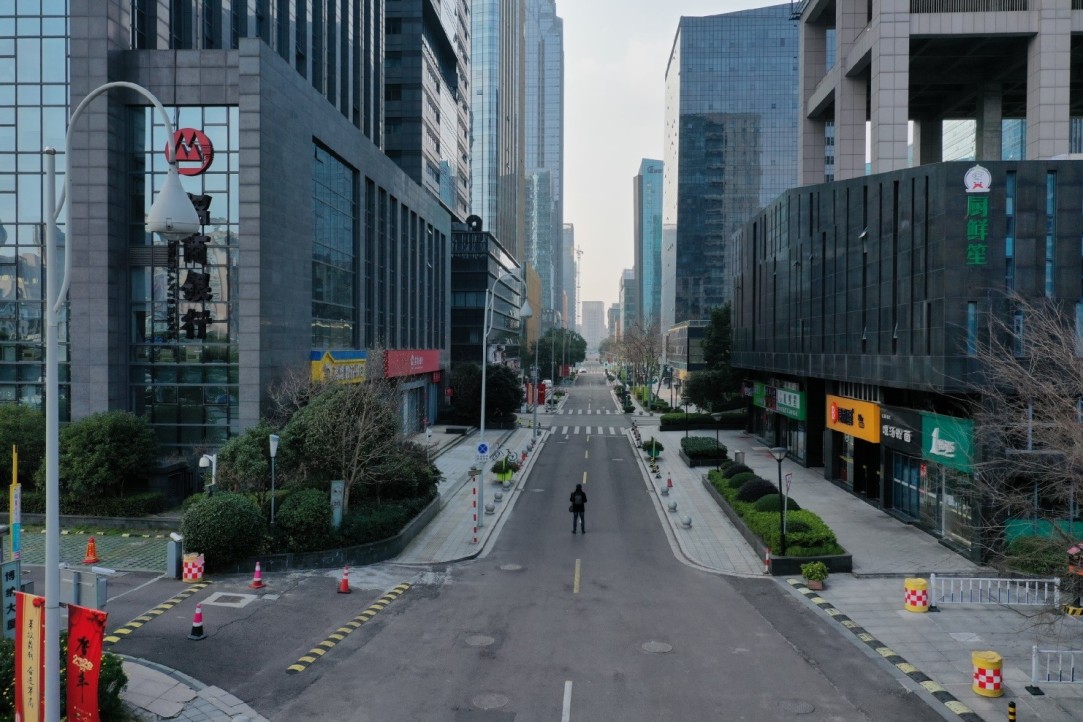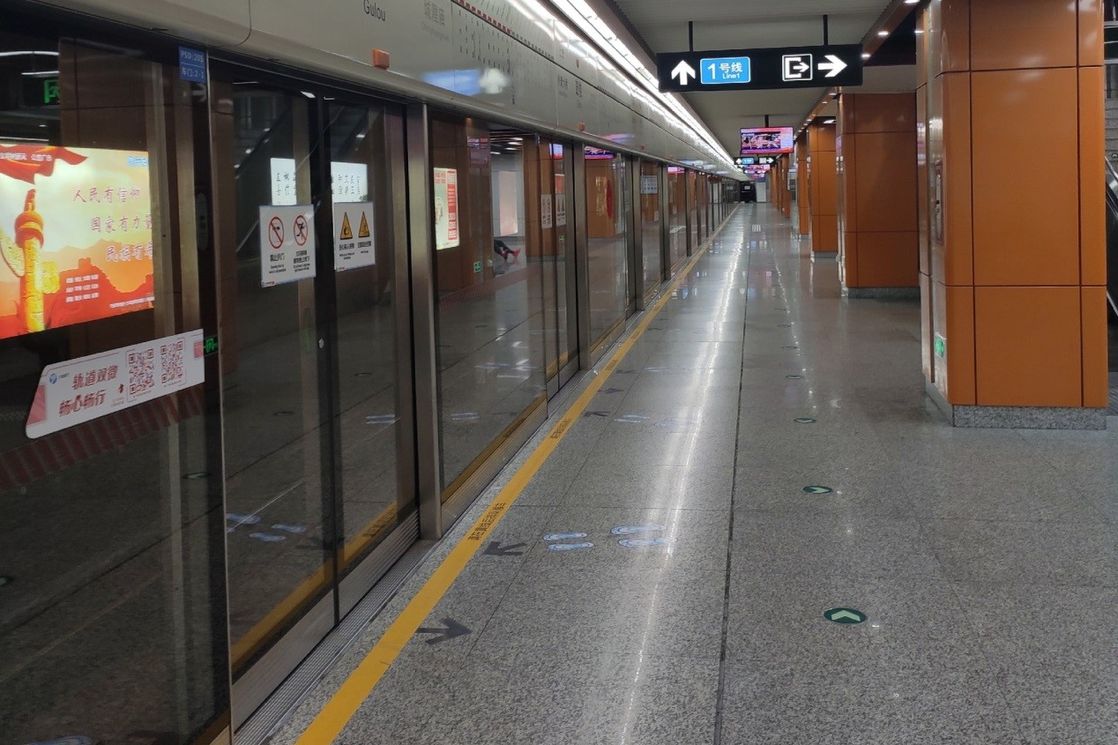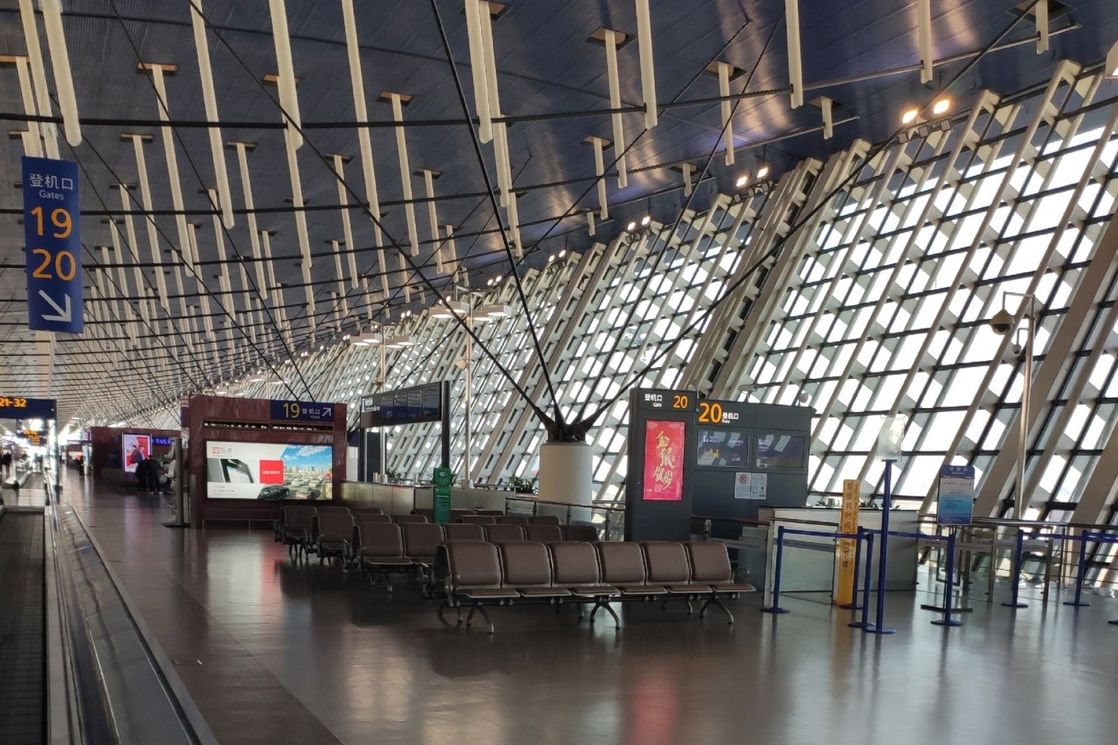Up Close with the Epidemic: From Russia to China and Back

China was the first country to be hit by the coronavirus, and other countries have looked to its handling of the outbreak as a model. Former HSE student Sergey Stepanov, who has been studying and working in China for the past four years, shared his personal experience with the COVID-19 outbreak while in China.
A New Virus is Detected in China
Right before New Year’s, on December 31, the World Health Organization (WHO) branch in China received a report of a case of pneumonia of unknown origin in Wuhan. For the first week of January, there is practically no information about the virus, not even a name.
I flew into Xi’an, China on January 9th. By this time, there were 59 recorded cases of the new virus in Wuhan. In Xi'an, as in other cities of China, preparations for the Chinese New Year were well underway: the central streets were filled with people, everyone was out and about shopping before going on trips to elsewhere in the country or abroad. News of the outbreak of the new virus was perceived as a local event.
The next day I got to Ningbo—this city in Zhejiang is my Chinese home. It is 900 km away from Wuhan. Very soon after that, I began hearing news about the outbreak of the virus and measures being taken to curb its spread; relatives started calling and asking about the situation. Dramatic headlines dominated world news with completely different assessments of what was happening.
At a certain moment, there was an avalanche of different stories about the outbreak coming from non-expert sources. For example, it was reported that an unknown virus was raging in China, that there were thousands of corpses, that there were hundreds of thousands of cases, that the Chinese authorities were hiding the real numbers, and that crematoriums could not keep up with the deluge of casualties of the deadly virus. Video footage of empty streets in China was often shown as evidence of the huge number of casualties, though in China empty streets on New Year's Day are the norm.

On the other hand, it was argued that the virus posed a threat only to older people over 65, mainly Chinese, and there was not a single case of infection among foreigners. It was also said that the situation was under control, all necessary measures were being taken, the problem was localized, and it did not pose a big threat. Chinese media spoke of the need to trust only official sources and refrain from disseminating ‘fake’ information.
An Emergency Situation
On January 19, Chinese leader Xi Jinping made his first statement regarding the situation in Wuhan. At this moment, I realized that it was necessary to quickly decide whether to leave or stay. As of January 23, according to official data, 581 cases of coronavirus infection had been recorded in China. In the Zhejiang province, where I live, the first level of emergency response was activated, and we received a message on WeChat from the Foreign Affairs Department of Ningbo City and Ningbo University. The recommendations came down to five points.
First, follow official information and avoid disseminating unverified information. Second, avoid visiting crowded places. Third, observe personal hygiene. Fourth, remain under medical supervision for 14 days if you have visited the epidemic zones or come into contact with people who have been in these zones. And the last point was to immediately contact your local hospital at the first signs of any symptoms of the disease.
From that moment on, everyone was required to wear masks, without which you could not enter any shops, the metro, and even taxis. If you did not have a mask, all this became inaccessible in one day.
On the campus of my university, posts were put in place to block roads and create a single, controlled path
Other than this, it felt like the Chinese New Year as usual: the streets are empty during this time as the Chinese are out of town, or visiting with friends or family.
At the same time, China began to halt all domestic travel. Before, this restriction concerned only travel to and from Wuhan and Hubei, but now flights began to be canceled throughout the country. As early as January 28, the border closure began, and it became clear that the cancellation of all air travel was only a matter of time, so I decided to return to Russia.
From China to Russia
On January 30, I bought a ticket for a direct flight from Shanghai to Moscow for February 2. There were many options for non-direct flights at half the price, but I was afraid that within an additional 10 hours of layovers, the borders could close. The next day, January 31, Russian Deputy Prime Minister Tatyana Golikova announced the closure of air travel between Russia and China. Beginning midnight on February 1, flights between Russia and mainland China were limited, with the exception of Aeroflot flights and regular flights of several Chinese carriers to Beijing, Guangzhou, Hong Kong, and Shanghai.
On February 2 at 5 am, a car was waiting for me—not the cheapest option for traveling between cities, but in an epidemic, any visit to a train station or an airport is a big risk. The exit to the street was blocked because of the quarantine that had begun, so in order to get to the car, I had to sneak over the fence.
It took about three hours to drive from Ningbo to Shanghai. During this time, I counted less than ten cars on the road, and this is on a highway that connects cities with populations of 8 and 20 million people.

The airport greeted me with unusual emptiness and silence. The largest groups were medical teams, who were, most likely, arriving to go to Wuhan. At the entrance to the airport building, everyone was screened by people in white protective suits who let travelers in three to four people at a time after taking their temperatures with a thermometer-gun and ascertaining that they had not been in Wuhan in the past 14 days. After that – a security check with no lines, an empty waiting area, boarding, cabin lights, and a sigh of relief.
Why I Decided to Return
After I returned to Russia and analyzed what was happening, I made several conclusions for myself about what to do in a crisis situation. First of all, you need to try to understand the nature of the crisis, get as close as possible to the essence of the problem, and assess the potential risks in terms of their probability and the severity of their consequences.
So, for me, the risk of the borders being closed was more obvious and more significant than the infection
As a result, I left China early, only afterwards realizing that I had actually left just in time.
In addition, it is important to cut through all the noise and just focus on the most reliable informational sources. To do this, you have to look at whether a story is from a source with direct access to the matter at hand, and whether that source has the necessary competence (or is in consultation with someone who does). And if a story is not from an original source with direct access to information, then you have to look for whether it links to one so that you can evaluate the reliability of the analysis.
Concentrating on the crisis itself and following primary sources allowed me to make an informed decision about ‘evacuating’ in time. At that time, the choice was not obvious. The figures did not seem excessively alarming, many people were staying to wait it out, and articles and videos circulated on social media about the harmlessness of the virus.
China’s Response to the Outbreak
Any crisis situation must be looked at as a whole, taking into account political, economic, and social factors—all this will inevitably affect the course of the crisis in a particular country. This is a big research topic. I can only highlight factors that are obvious to me, and which, in my opinion, inevitably influenced the course and end of the outbreak in China from December to April 2020.
Total Discipline
After China issued recommendations to stay at home, the streets were empty the next day. This worked in conjunction with social and legislative measures to promote compliance with the recommendations: it was forbidden for businesses to operate and for people to hold public events. At the same time, business support measures were introduced (such as exemption periods for bills and taxes).
Rapid Implementation of Decisions
In my opinion, technical support for services and their well-coordinated work requires professional integrated management work, and in China this was done perfectly and in the shortest possible time.
High Tech Surveillance
Thermal imagers, contactless thermometers, face recognition—all this was used to identify and localize the virus.
Localization of Production
Fighting an epidemic requires enormous resources, including providing necessary equipment and consumables. China, despite the assistance it received, has significant production capacities, many of which were aimed at the production of necessary products.
The COVID-19 epidemic revealed the unpreparedness of most countries in the world for this kind of challenge. Obviously, similar to September 11, new international standards will likely be introduced after this to prevent the spread of viruses. Today, many countries are trying to replicate the Chinese response, not taking into account specific aspects that are exclusive to China.
After I arrived in Russia, I realized that I was in for a second wave, so I shared my experience with my parents and friends, and I focused on relevant information. Almost immediately, I intensified the work of my company in the direction of online services—a timely move, as it turned out.
See also:
HSE Biologists Explain Mechanism behind Coronavirus Evolution
A team of researchers, including scientists of the HSE Faculty of Biology and Biotechnology, have analysed the evolutionary path of the coronavirus from the Wuhan variant to Omicron. Their findings indicate that many genomic mutations in SARS-CoV-2 are shaped by processes occurring in the intestines and lungs, where the virus acquires the ability to evade the inhibitory effects of microRNA molecules. The study findings have been published in the Journal of Medical Virology.
Russian Researchers Explain Origins of Dangerous Coronavirus Variants
HSE researchers, in collaboration with their colleagues from Skoltech and the Central Research Institute for Epidemiology, have uncovered the mechanisms behind the emergence of new and dangerous coronavirus variants, such as Alpha, Delta, Omicron, and others. They have discovered that the likelihood of a substitution occurring at a specific site of the SARS-CoV-2 genome is dependent on concordant substitutions occurring at other sites. This explains why new and more contagious variants of the virus can emerge unexpectedly and differ significantly from those that were previously circulating. The study’s findings have been published in eLife.
HSE Biologists Prepare Strategy for Universal COVID Test
Russian researchers have developed a strategy to create a cheap and rapid COVID-19 test based on isothermal amplification. According to their publication in Applied Biochemistry and Microbiology, use of this strategy will make it possible to create universal test systems for any of the COVID-19 variants.
People’s Values Affect Their Attitudes to COVID-19 Restrictions
HSE social and political analysts have established which value models and circumstances promote support for restrictive government policies aimed at combatting the coronavirus pandemic. The research is published in Plos One.
Model of Predator-Prey Relationship Helps Predict Spread of COVID-19
Researchers from the HSE Faculty of Economic Sciences have proposed a mathematical model that describes the course of the COVID-19 pandemic, taking into account the restrictions applied in different countries. The model will help governments make reasonable and timely decisions on introducing or lifting restrictions. The paper was published in Eurasian Economic Review.
HSE University Classes to Be Held On Site for All Students
Classes in the new academic year will take place on site for students of all HSE University campuses. Existing COVID safety precautions will remain in effect.
Russian Scientists Investigate the Immune Response to SARS-CoV-2 Variants
HSE University researchers assessed the effectiveness of the T-cell immune response to 11 variants of SARS-CoV-2. Their findings have been published in Nucleic Acids Research.
First-year Students Will Be Able to Get COVID Shots at HSE University
The new regulations ‘On the Organization of Studies for the 2021/2022 Academic Year’ feature in detail what will change for first-year students in the new academic year. HSE University will be organizing a vaccination drive in September for students aged 18 and over who are unvaccinated. Younger students will be eligible for vaccination once they turn 18.
New Safety Measures to Be Introduced at HSE University
Starting September 1, 2021, HSE University-Moscow is introducing new safety policies on campus to prevent the spread of COVID-19. They apply to students over 18 years old who have not had COVID during the last six months, have not been vaccinated (with a Russian or a foreign vaccine), nor have a medical exemption from vaccination. Free vaccination will be available on campus to all arriving students.
HSE University Creates the Viral Genealogy Simulator to Model the Spread of COVID-19
Researchers of HSE Tikhonov Moscow Institute of Electronics and Mathematics (MIEM), in cooperation with their colleagues from the University of California, Santa Cruz (UCSC), and The European Bioinformatics Institute (EMBL-EBI), have developed software to model the spread of the COVID-19 global pandemic. This is the world’s fastest Viral Genealogy Simulator (VGsim). For more details about this scalable simulator, read the reprint on medRxiv. The code is freely available at GitHub.


